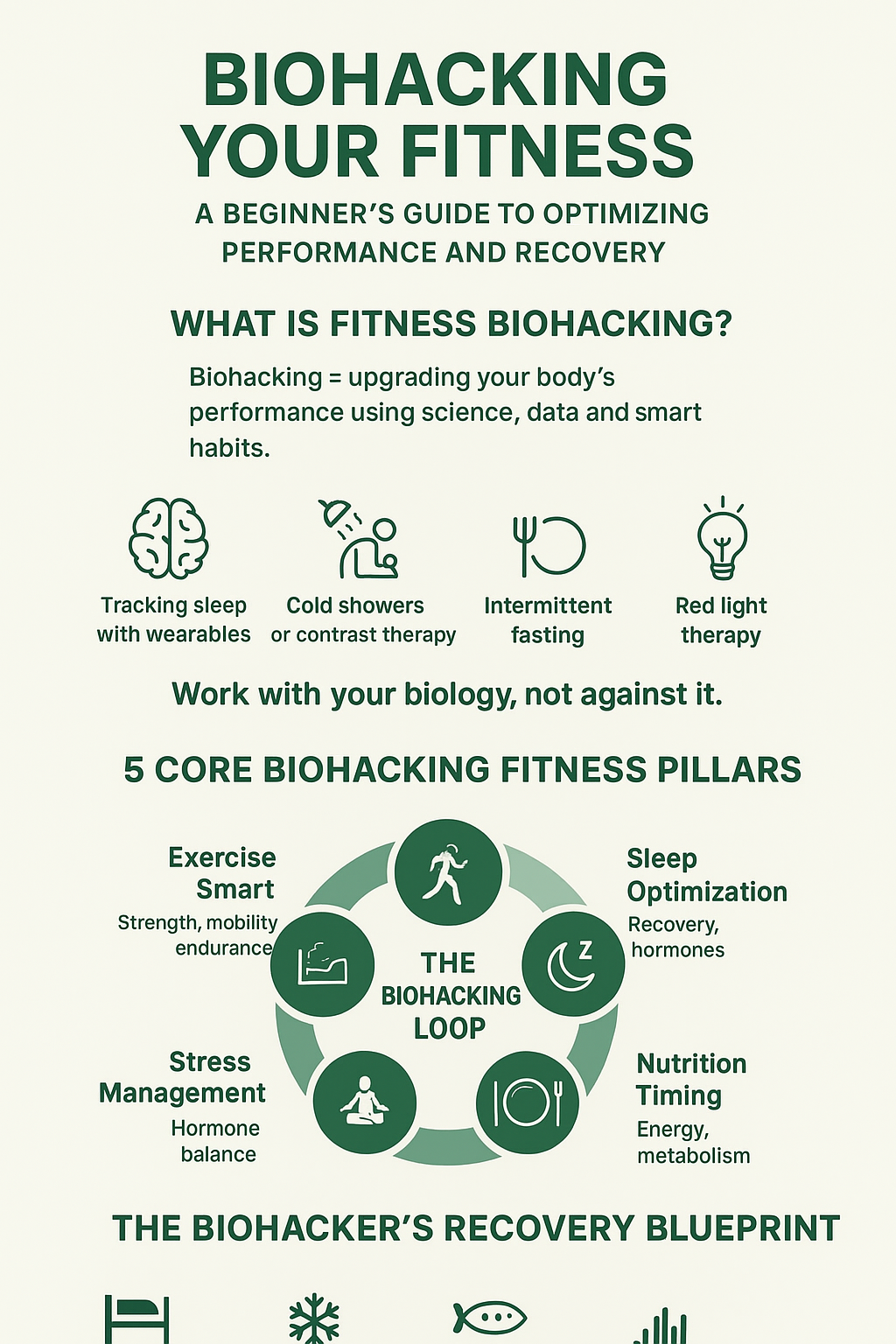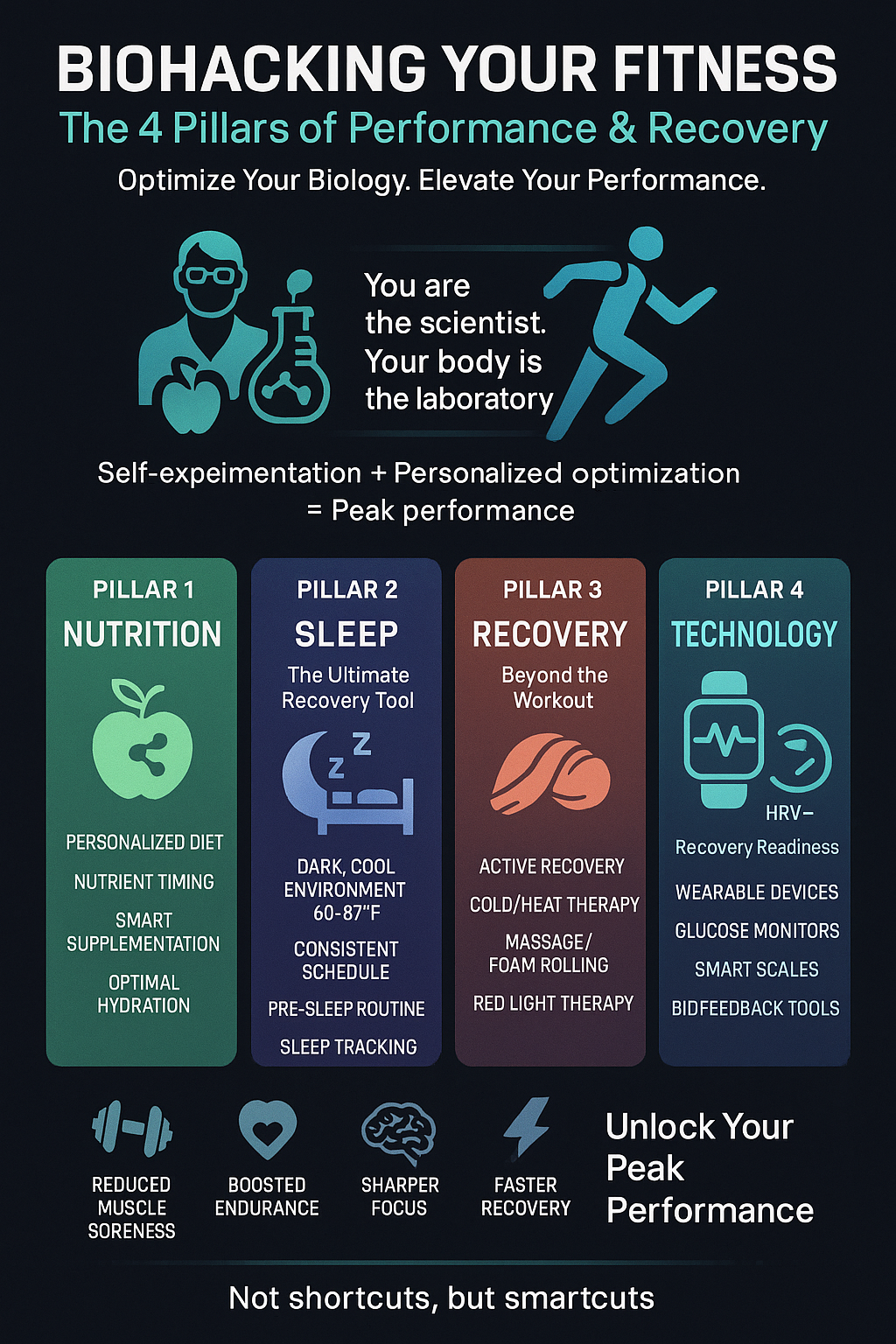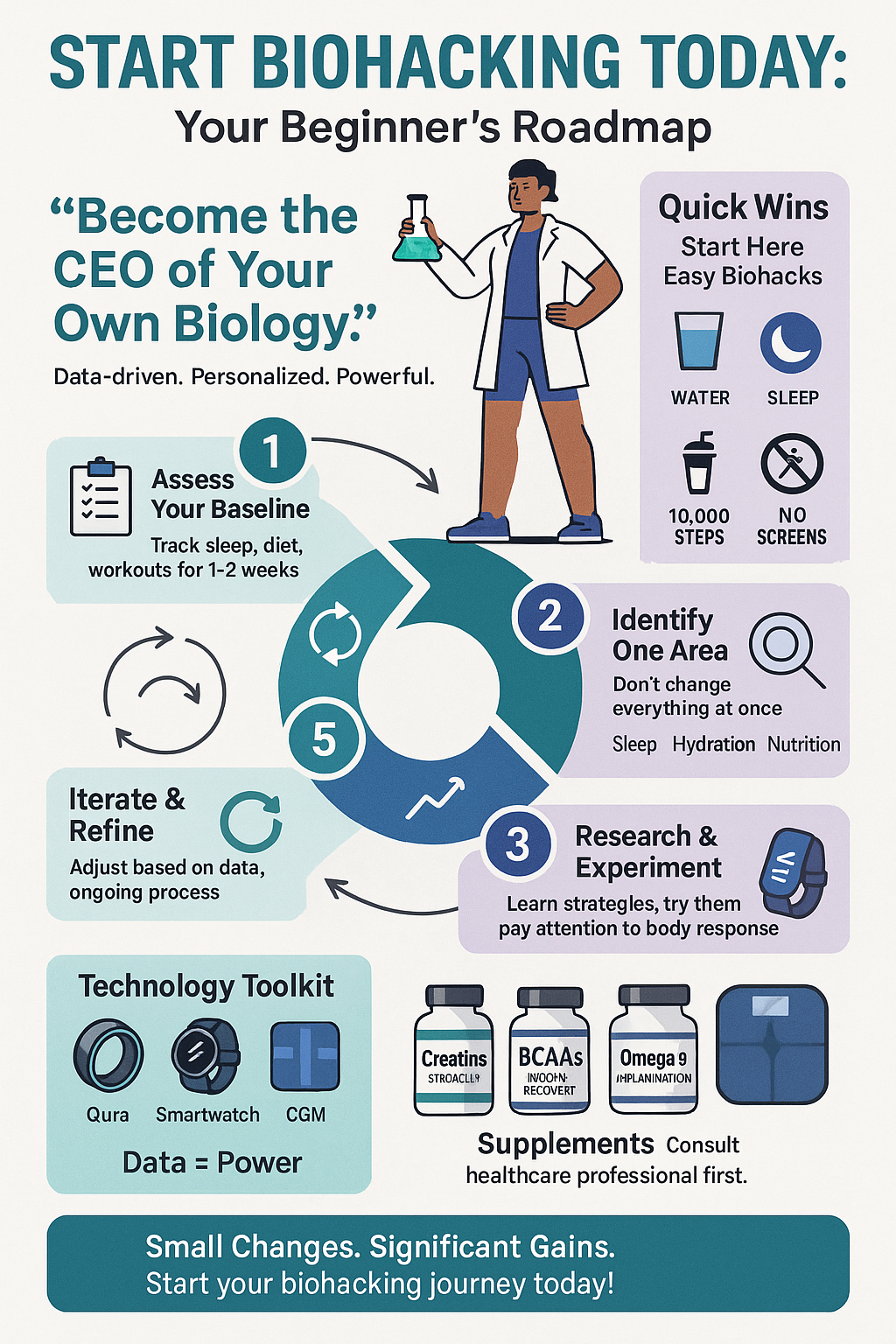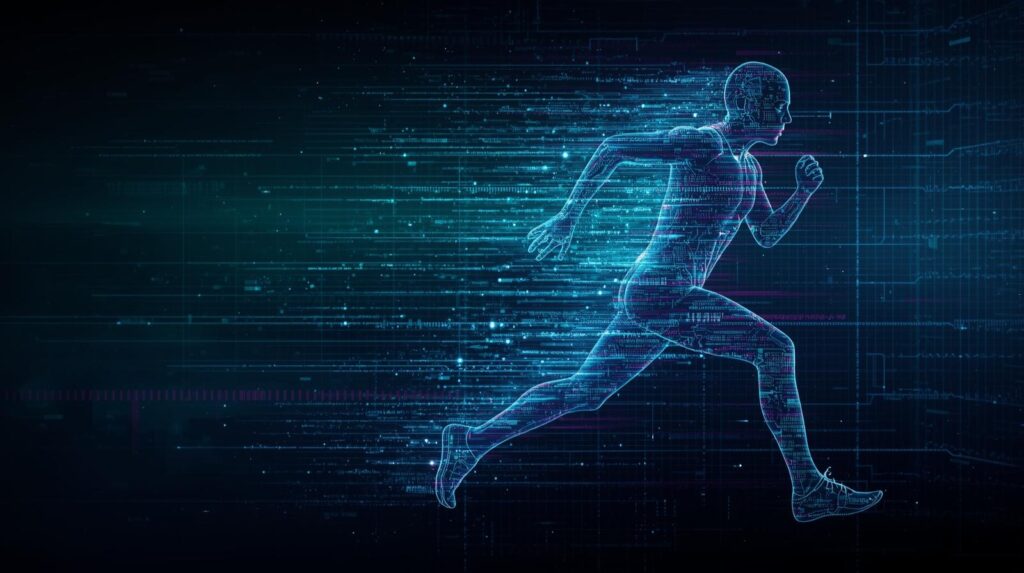
In the relentless pursuit of peak physical and mental performance, a new frontier has emerged, captivating athletes, health enthusiasts, and anyone looking to unlock their full potential: biohacking. Far from being a fringe concept, biohacking is the art and science of optimizing your biology through a combination of lifestyle interventions, nutritional strategies, and cutting-edge technologies. It’s about taking control of your internal environment to enhance everything from energy levels and cognitive function to physical recovery and longevity.
For the fitness enthusiast, biohacking isn’t about shortcuts; it’s about smartcuts. It’s about understanding the intricate mechanisms of your body and implementing targeted strategies to improve performance, accelerate recovery, and prevent burnout. Imagine reducing muscle soreness, boosting your endurance, or sharpening your focus during intense workouts – these are the promises of intelligent biohacking.
This guide will introduce you to the fundamental principles of biohacking for fitness, offering actionable insights and practical tips that you can integrate into your routine today. We’ll explore key areas such as nutrition, sleep, recovery, and technology, demonstrating how small, deliberate changes can lead to significant gains in your fitness journey.

What Exactly is Biohacking?
At its core, biohacking is about self-experimentation and personalized optimization. It involves making incremental changes to your diet, exercise, and lifestyle to
improve your physical and mental well-being. Think of yourself as a scientist and your body as the laboratory. You’re collecting data, testing hypotheses, and refining your approach to achieve optimal results.
While the term
“biohacking” might sound intimidating or overly technical, many of its principles are rooted in common sense and ancient practices. It’s about being mindful of what you put into your body, how you move, and how you rest. The modern twist comes from leveraging scientific understanding and technological advancements to refine these practices for maximum impact.

Key Pillars of Fitness Biohacking
To effectively biohack your fitness, consider these interconnected pillars:
1. Nutrition: Fueling Your Performance
What you eat directly impacts your energy levels, recovery, and overall athletic performance. Biohacking nutrition goes beyond simply counting calories; it involves understanding macronutrient ratios, micronutrient deficiencies, and the impact of food on your gut microbiome and inflammation.
- Personalized Diet: There’s no one-size-fits-all diet. Experiment with different eating styles (e.g., ketogenic, paleo, plant-based) to find what optimizes your energy and recovery. Consider genetic testing or microbiome analysis for truly personalized dietary recommendations.
- Nutrient Timing: Strategically consuming nutrients around your workouts can significantly impact performance and recovery. For instance, consuming carbohydrates and protein before and after exercise can enhance muscle glycogen replenishment and repair.
- Supplementation: While a whole-food diet is paramount, targeted supplementation can fill nutritional gaps and support specific physiological processes. Common fitness-oriented supplements include creatine for strength, BCAAs for muscle recovery, and omega-3 fatty acids for inflammation reduction. Always consult with a healthcare professional before starting any new supplement regimen.
- Hydration: Often overlooked, proper hydration is critical for performance, thermoregulation, and nutrient transport. Biohackers often monitor urine color, use smart water bottles, or even add electrolytes to their water to ensure optimal hydration.
2. Sleep: The Ultimate Recovery Tool
Sleep is not merely a period of inactivity; it’s a highly active state where your body repairs, rebuilds, and consolidates memories. For athletes and fitness enthusiasts, sleep is arguably the most potent recovery tool available. Chronic sleep deprivation can impair performance, increase injury risk, and hinder muscle growth.
- Optimize Your Sleep Environment: Create a dark, cool, and quiet bedroom. Block out all light, maintain a temperature between 60-67°F (15-19°C), and minimize noise.
- Consistent Sleep Schedule: Go to bed and wake up at the same time every day, even on weekends. This helps regulate your circadian rhythm.
- Pre-Sleep Routine: Develop a relaxing routine before bed, such as reading, taking a warm bath, or meditating. Avoid screens (phones, tablets, computers) at least an hour before sleep, as blue light can disrupt melatonin production.
- Track Your Sleep: Wearable devices can provide insights into your sleep patterns, including sleep stages, heart rate variability, and restless periods. This data can help you identify areas for improvement.
3. Recovery: Beyond the Workout
Effective recovery is just as important as the workout itself. Biohacking recovery involves strategies to reduce muscle soreness, accelerate tissue repair, and restore physiological balance.
- Active Recovery: Light activities like walking, cycling, or foam rolling can improve blood flow and reduce muscle stiffness.
- Cold and Heat Therapy: Contrast therapy (alternating between cold and hot exposure) or dedicated cold plunges (cryotherapy) and saunas can reduce inflammation and promote recovery.
- Massage and Myofascial Release: Techniques like deep tissue massage, percussive therapy (massage guns), and foam rolling can release muscle tension and improve flexibility.
- Red Light Therapy: Emerging research suggests that red light therapy can aid in muscle recovery, reduce inflammation, and improve cellular function.
4. Technology: Your Biohacking Allies
Modern technology offers an array of tools to monitor, analyze, and optimize your biology. These devices provide data that can inform your biohacking strategies.
- Wearable Devices: Smartwatches, fitness trackers, and rings (e.g., Oura Ring) track metrics like heart rate, sleep quality, activity levels, and heart rate variability (HRV). HRV is a key indicator of recovery and readiness for training.
- Glucose Monitors: Continuous glucose monitors (CGMs) provide real-time insights into how different foods and activities impact your blood sugar levels, allowing for personalized dietary adjustments.
- Smart Scales: These scales go beyond weight, measuring body composition (muscle mass, body fat percentage) and other metrics.
- Biofeedback Devices: Tools that help you gain conscious control over physiological functions, such as heart rate or breathing, through real-time feedback.
Getting Started with Fitness Biohacking
- Assess Your Baseline: Before making changes, understand where you currently stand. Track your sleep, diet, and workout performance for a week or two.
- Identify One Area to Optimize: Don’t try to change everything at once. Choose one area (e.g., sleep, hydration, post-workout nutrition) and focus on optimizing it.
- Research and Experiment: Learn about different biohacking strategies and try them out. Pay attention to how your body responds.
- Track and Analyze: Use journals, apps, or wearable devices to track your progress and analyze the impact of your interventions.
- Iterate and Refine: Based on your data, adjust your strategies. Biohacking is an ongoing process of learning and adaptation.
The Future of Fitness is Personalized
Biohacking represents a shift towards a more personalized and data-driven approach to fitness. By understanding your unique biology and leveraging the tools available, you can unlock new levels of performance, accelerate recovery, and ultimately, live a healthier, more vibrant life. It’s about becoming the CEO of your own biology, making informed decisions that empower you to achieve your fitness goals and beyond.
Disclaimer: The information provided in this article is for informational purposes only and does not constitute medical advice. Always consult with a qualified healthcare professional before making any changes to your diet, exercise, or supplement regimen, especially if you have pre-existing medical conditions.


